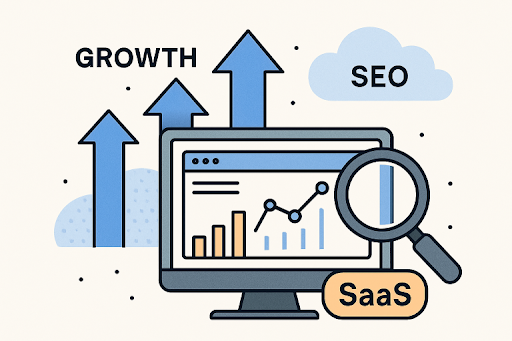In the heart of every modern business lies a growing pool of data rich in potential but often untapped. Every click, every sale, every customer interaction generates valuable insights. But raw data, without clarity or structure, can quickly become overwhelming. This is where database reporting software steps in quietly, offering a clearer path forward. It doesn’t shout or demand attention. Instead, it gently organizes your data, simplifies your view, and brings deeper meaning to your numbers so that every decision you make feels informed and confident.
Understanding the Role of Database Reporting Software
At its simplest, database reporting software connects directly to your databases and transforms information into readable, visual reports. These reports help teams understand what’s happening in real time, or over a specific period. Whether it’s sales performance, inventory trends, or customer behavior, having these insights ready allows for smoother decision-making. The goal isn’t just to display data, but to tell a story that everyone from managers to frontline teams can understand and trust.
Helping Businesses Feel More in Control
Data should never feel like a burden. When presented thoughtfully, it becomes a source of calm and clarity. With the right reporting tools in place, businesses can:
- Spot trends before they become challenges
- Adjust strategies based on real feedback
- Improve operations with fewer delays
- Share insights across departments easily
These subtle yet powerful shifts give businesses a firmer grip on performance while building a culture of transparency and awareness.
What Makes a Reporting Tool Truly Supportive?
Not all software is created equal. Some are packed with features but lack approachability. Others may look sleek but don’t offer enough flexibility. The best database reporting software should quietly support your needs without adding complexity. Here’s what to look for:
Effortless Integration
The right tool should blend seamlessly with your current systems. Whether you’re using cloud platforms or traditional SQL databases, the connection process should feel simple and secure.
Simple, Yet Powerful Dashboards
Visual clarity is everything. You don’t need clutter you need charts, tables, and summaries that gently guide your focus to what matters most.
Real-Time Data Refresh
Live data connections ensure that the reports reflect the latest numbers. No more outdated spreadsheets or version confusion.
Smart Automation
Schedule reports to be delivered on time without lifting a finger. Whether it’s daily, weekly, or monthly summaries, automation gives your team breathing space.
Strong but Flexible Security
Role-based access lets you control who sees what. That way, sensitive information remains protected, while still allowing for open collaboration.
Popular Tools That Businesses Trust
Choosing the right solution can be overwhelming, but several tools have quietly earned the trust of thousands of teams:
- Tableau – Well-loved for its elegant visualizations and interactive dashboards. It’s a top choice for teams wanting depth and creativity in how they view data.
- Power BI – Microsoft’s entry into the space is ideal for teams working in the Microsoft ecosystem. Its smooth integration and robust features make it suitable for both beginners and advanced users.
- Zoho Analytics – Perfect for small to mid-sized companies, Zoho offers intuitive tools at an accessible price point.
- Looker – This Google-backed platform offers strong modeling capabilities and a modern, flexible experience.
- Metabase – With an open-source foundation, Metabase is ideal for teams that want control and simplicity without extra costs.
The Gentle Impact of Better Reporting
Sometimes, the smallest shifts create the biggest difference. That’s what happens when a team starts using database reporting software with intention. You begin to notice:
- Decisions come quicker, but feel more grounded
- Meetings become more focused and less speculative
- Data literacy grows across the organization
- Teams gain confidence in their actions
In this way, a reporting tool doesn’t just change how you look at numbers it changes the way your team works together.
Real-World Use Cases That Bring It to Life
Let’s take a quick look at how different teams use database reporting software in daily practice:
Retail Managers – Monitor daily sales by store location, track inventory levels, and adjust promotions based on real-time data.
Marketing Teams – View campaign performance in live dashboards, compare ad spend against conversions, and quickly test what’s working.
Finance Departments – Review monthly expenses, monitor budgets, and prepare reports that align with regulatory needs—without chasing spreadsheets.
Customer Support Leads – Track response times, identify common support issues, and improve service through insight—not guesswork.
How to Choose the Software That Fits You Best
There’s no one-size-fits-all. To find a solution that fits gently into your world, start by asking a few quiet questions:
- What type of data do we work with daily?
- Who needs to view or build reports?
- Do we need real-time updates or scheduled summaries?
- Should the tool integrate with other platforms we use?
- How much technical skill do our users have?
Taking time to reflect on these points makes the search feel less pressured and more purposeful.
Conclusion
In business, uncertainty can feel heavy. But data when presented thoughtfully has the power to lift that weight. Database reporting software won’t solve every challenge, but it will light the path forward. It offers clarity in times of doubt, direction in times of change, and confidence in every decision you make. So whether you’re a small team starting fresh or a larger organization seeking smoother insights, know this: with the right tool, your data becomes less of a mystery and more of a gentle guide toward growth.











